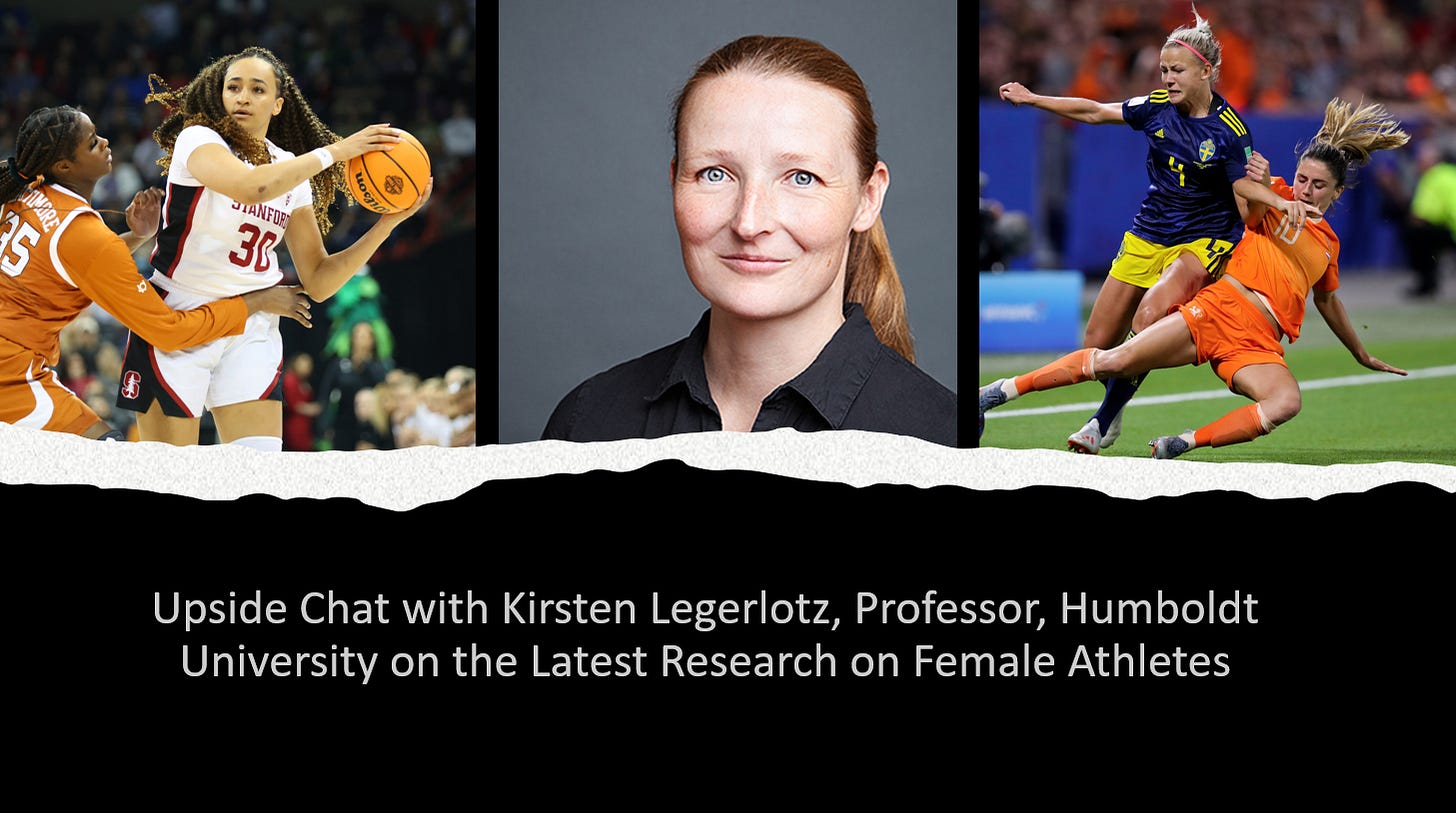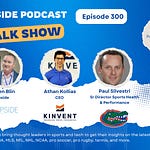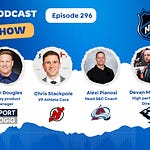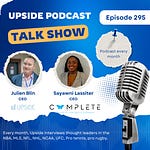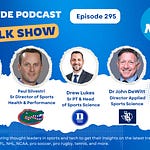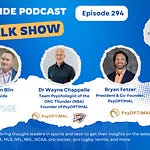This week we have the honor to interview Kirsten Legerlotz, Professor at the Humboldt University.
📝Show Notes: Through this interview, we touched on her background, her role, her approach towards innovation and injury prevention. Then we touched on the best studies she have come across, her favorite technologies and the type of studies she would conduct if she had unlimited resources.
🚀Best Quotes: Here’s some of the key discussion points and best quotes from our conversation with Kirsten:
On her background:
“Currently I'm employed as a professor for movement biomechanics at the Humboldt University in Berlin. So movement biomechanics is part of sports science. I'm working at a sports science department, teaching sports science students, and doing research particularly on the adaptation of the musculoskeletal system, particularly on the muscle and tendon adaptation, and the effects of hormones on those tissues and the resulting effect on injury risk”.
“I've started here in 2014, and before that I traveled the world as a postdoc. So I did my PhD at the German Sports University in Cologne. And from there I moved to New Zealand to do my postdoc there at the Department of Sports and Exercise Science. And then from there I went to the UK where I first spent some time as a postdoc in London at the Queen Mary University, at the School of Engineering at Material Science”.
“And then I moved to Norwich to the School of Biological Sciences at the University of East Anglia. And then I left academia to work for Novartis where I looked at tendon health and tendon healing basically. And from there I moved to do my professorship in Berlin”.
On the lack of research and understanding of women athletes’ injuries:
“There certainly is a lack of studies on female athletes, but it's also not only the number of studies, but also the questions that we ask. For example, it has been known that the prevalence of ACL injuries, meaning anterior cruciate ligament injuries occur more frequently during certain phases of the menstrual cycle such as during the follicular phase and the ovulation phase, so that that has been described again and again”.
“There are many studies on that, but there doesn't really help us because we don't know why that is happening. We can describe that it is happening. But it does not allow us to really react to that or to prevent injuries. We need to find out why those injuries are happening. And there has been one explanation for that, which is that the ligaments are supposedly becoming more compliant during the ovulation and that has been associated with certain causes of injuries”.
“And that also reflects how we see the menstrual cycle and what kind of questions we regularly ask with the menstrual cycle, because we always look at things to become weaker or less good and that are different to men”.
On the fact that there are no studies that have shown a causal relationship between ACL injuries and knee compliance:
“And then we interpret the results in the same way, which means that yes, it is true that, the knee joint becomes more compliant during the Ovulation phase. And that is correct. There again has been many studies to show that, but those reviews also have shown that there's no causal relationship, no association between ACL injuries and knee compliance”.
“And so, for example, knee compliance is higher in the luteal phase than it is in the follicular phase, but it is in the follicular phases where more ACL injuries happen. So both of those two things occur, but they're not really related to each other”.
“We should not misinterpret a correlation for a causal relationship. Just because two things occur at the same time doesn't necessarily mean that they are the result of the same variable”.
On the fact that when it comes to women athletes’ injuries there are more complex elements and factors that we still don't know about:
“For example, in one of the studies which looked at the prevalence of ACL injuries in skiers along the menstrual cycle, the authors claimed afterwards that women should be more careful, do more careful skiing during the ovulation. But the point here is that at ovulation, other studies have shown that women are actually performing better”.
“They show that they're more motivated. They show higher risk taking behavior during ovulation. So yes, if you tell elite skiers to to be careful during ovulation, you will decrease their performance. And yes, it may be that the higher motivation and the higher risk taking behavior may lead to more injuries, but it probably also leads to better performance and better results in races”.
On some of the best studies on women athletes’ injuries that she has come across:
“I think one of the studies that I really like is the research of Christian Cook who did a lot on testosterone fluctuations during the menstrual cycle, showing, for example, that athletes have high testosterone levels during Ovulation, and that those are related to more motivation and high risk taking behavior, which also shows that it's not just estrogen and progesterone that fluctuates during the menstrual cycle, but it's also testosterone”.
“And that's also something we need to consider if we think about cycle orientated training or adaptation to strength training that there are variations in testosterone concentration, which we can make use of and use them to our advantage”.
On the type of study she would conduct if she had unlimited resources:
“I think that what's always a problem is that, if you want to study the menstrual cycle, you need many women because the inter-individual variations are huge. And you need to follow them up for a long time, so you need really good funding to be able to have enough staff and enough time to follow those athletes for an extended period of time. And you have to have equipment that allows you to measure them regularly to determine their hormone level, and to do that also quite frequently”.
“I think if you manage to get 40 female athletes with a natural menstrual cycle, and you would be able to follow them for six months, I think that would do the trick”.
You may also like:
Upside Team Profile: FC St Pauli (3. Bundesliga) & Chat with Saba Shakalio, Head Athletic Trainer
🔥Upside Chat: Mélanie Pauli, Athletic Trainer at the Swiss Football Association on Women Soccer & the Importance of Technologies
🔥 Upside Chat: Dave Hancock, CEO, Apollo (Leading Athlete Management Systems (AMS) vendor)
🔥Upside Chat: Alexi Pianosi, Strengths and Conditioning Coach, Pittsburgh Penguins (NHL)
🔥Upside Chat: Pierre Barrieu, High Performance Director, Toronto FC (MLS)
🔮 2022 Upside Top Sports Tech Predictions (NFT/Metaverse, Sports Performance, IPOs/M&As..)


